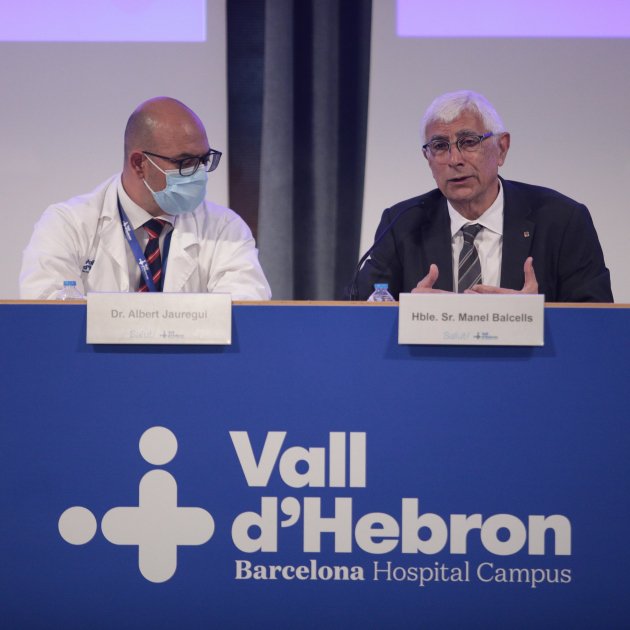Barcelona's Vall d'Hebron University Hospital is changing the paradigm of lung transplants. The internationally renowned Catalan health centre has achieved a double milestone in this area. On the one hand, the world's first fully-robotic lung transplant has been performed. On the other hand, a new method of access to remove a lung, much less invasive than that used up until now, has been created. Both of these breakthroughs were achieved within the same operation. The pioneering surgery was performed on a 65-year-old man who needed a lung transplant due to pulmonary fibrosis.
These two new methods make such complex operations less invasive and more precise, thus making life easier for the patient and facilitating the work of the doctors. "At Vall d'Hebron we had been considering for a long time how we could convert this very aggressive surgery into a less invasive operation, but we always ran into the same problem: we couldn't think of where we could remove the diseased lung and insert the new one", explains Dr Albert Jauregui, head of the Thoracic Surgery and Lung Transplant Service. Finally, they found the answer: an eight-centimetre incision, just above the diaphragm. So you go from an opening of 30 centimetres to one of less than 10, and thus recovery is easier.
The da Vinci robot
In order for this new eight-centimetre incision to function as a path for the extraction and introduction of organs, the millimetric precision arms of the da Vinci robot are needed. After making the aforementioned incision, this machine inserts its four arms through small incisions (holes 8 to 12 millimetres wide) at various points on the patient's chest. Once inside, these arms are operated by doctors, who are thus able to act on the organs inside the body.
Once the lung was separated from the heart, using the robotic arms, the diseased organ was extracted through the subxiphoid window. And through the same incision, the new lung was inserted, and attached to the body using the robotic arms.
Dr Carles Bravo, medical director of the hospital's lung transplant programme, emphasizes that "thanks to this milestone, the lung transplant programme enters a new stage of minimally invasive surgery with multiple advantages for the lung transplant recipient and which, therefore, will improve the programme's outcomes."
Absence of pain
Antonio Roman is the patient who has undergone this operation. Apart from some complications attributable to the risks incurred in any operation, Roman has commented on the lack of pain in the whole process. He thanked all the professionals involved in his case for their work, as well as the donor. "Since I've been conscious, the pain has been zero," he underlined.
Doctor Albert Jauregui: "I don't think it would be ethical to offer this completely new technique to all the transplant patients on the waiting list at the Vall d'Hebron because every patient is their own world, and has a different complexity in the surgery... [but] we do want this technique to expand, because if we can help more people, that's the most important objective."
